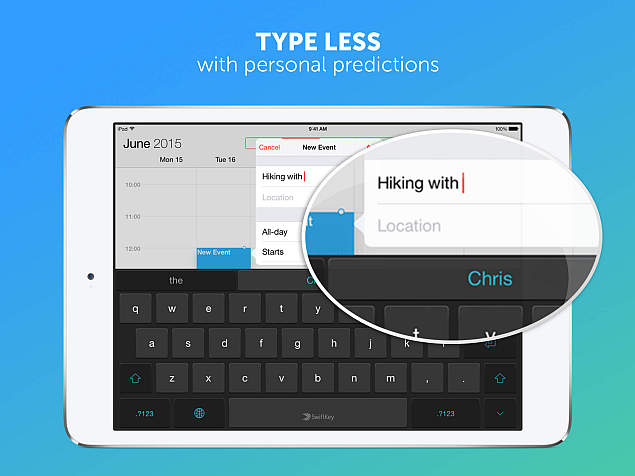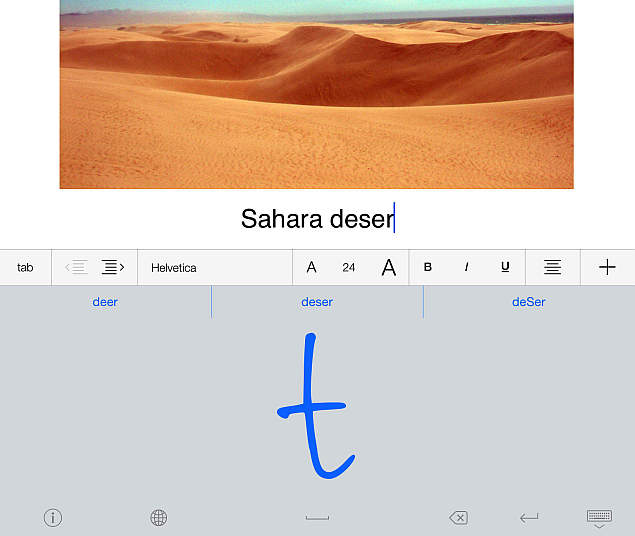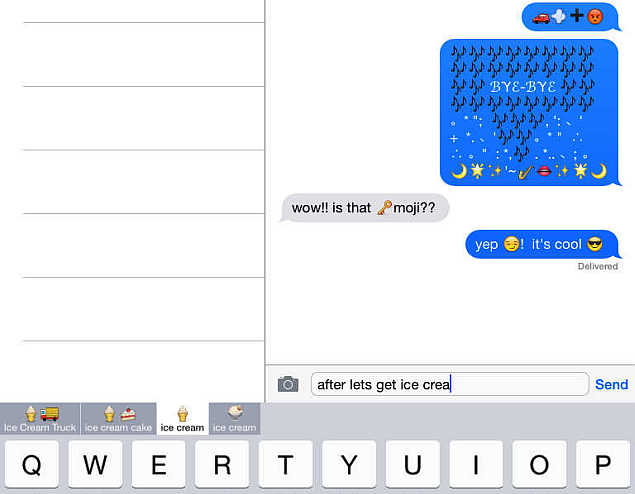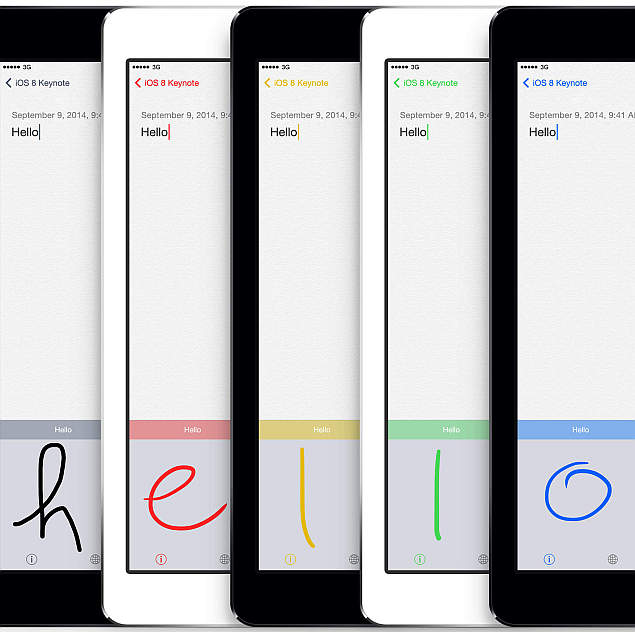Apple
has just made iOS 8 available to the world and with it come several
exciting features. We've written about the top 10 new features in iOS 8, which you must read to get a quick overview. One of the best new
features is custom keyboards. Apple has finally allowed third-party
developers to make keyboard apps for iOS.
(Also see: How to Download and Install iOS 8 on Your iPhone, iPad, or iPod Touch)
Apple's
own keyboard app is much better now with features like word suggestions and
prediction, but third-party apps offer better prediction, more
languages and different themes. On the other hand, these apps
can transmit or receive your data - all the companies claim to take
privacy very seriously but if security is a major concern then you
should stick to the default keyboard.
The other issue with third
party keyboards is a slight hit to performance. The default keyboard
always loads instantly but the third-party alternatives lagged
slightly. We even faced a few instances when these keyboards got stuck
entirely. At times the app we were using was working but the
keyboard and the form where you type went missing.
If you're still on board to try the new keyboards, then here are our three favourites for iOS 8:
SwiftKey
In our view this is the best keyboard app on the App Store. SwiftKey's
best feature is its prediction technology, which is better than that of
its competitors. We typed faster when using SwiftKey and found that it
learned our words quickly too. Its language support features
European languages such as Spanish and Portuguese and it supports
different keyboard layouts such as QWERTZ and AZERTY apart from the standard QWERTY.
SwiftKey for Android supports also Hinglish (Hindi typed
in the Roman script) language, but we're yet to see that on the iOS
version. This app is completely free, making it even more appealing.
SwiftKey, Swype and
Fleksy
are probably the best three "traditional" keyboards available for iOS 8
right now, and of the three, we liked SwiftKey the most. Its prediction
engine is better than Swype, and it is easier to use than Fleksy. Like
Swype, SwiftKey also lets you swipe to type, but the word predictions it offered
worked better for us than that of Swype.
Fleksy is like the keyboard on
BB10 smartphones and takes a little getting used to. It took us some
time to pick up the gestures on Fleksy (swipe down to switch between
suggested words, etc.) and a few hours later, we were still typing
faster on SwiftKey.

Stack
MyScript Stack keyboard lets you
write on the screen to type. This keyboard replaces traditional keys
with a blank space, where you can draw individual letters to type.
Handwriting based keyboards can be very useful on large phones and
tablets where space isn't an issue, but this app isn't very good on
4-inch iPhone devices. We tried it on the iPhone and iPad and found that
it works better on the iPad. The one feature that we found missing on
this keyboard was recognition of words rather than letters. We often
tried to write an entire word in cursive handwriting but it wouldn't
recognise those. However, it worked perfectly when we wrote individual
letters. We wrote letters one on top of the other and it still managed
to recognise them all. This keyboard is probably better if you want to
use a stylus instead of a keyboard though.

Keymoji
Emoji
apps have always been around on the App Store, and we weren't surprised
to see a keyboard dedicated to emoji as soon as iOS 8 launched. Keymoji
is just like the default iOS keyboard with one twist - the prediction
strip shows emoji suggestions. It suggests emoji for every word you
type. Whether you type a simple word such as plant or a phrase such as
dog eat dog, Keymoji will try its best to make you communicate entirely
in emoji. It's a pity that this keyboard doesn't understand Indian
languages, but that's a minor complaint in an otherwise fun keyboard.

Which are your favourite keyboard apps? Let us know via the comments.
 Apple’s Foldable iPhone Tipped to Have a Hole-Punch Display and Skip Face ID17 April 2025
Apple’s Foldable iPhone Tipped to Have a Hole-Punch Display and Skip Face ID17 April 2025 Apple Vision Air Could Debut as Thin and Light Mixed Reality Headset, Tipster Claims17 April 2025
Apple Vision Air Could Debut as Thin and Light Mixed Reality Headset, Tipster Claims17 April 2025 Apple Rolls Out iOS 18.4.1 Update With Fixes for Exploited Security Vulnerabilities, CarPlay Issue17 April 2025
Apple Rolls Out iOS 18.4.1 Update With Fixes for Exploited Security Vulnerabilities, CarPlay Issue17 April 2025 Apple to Reorganise Sales Division With Departure of Enterprise Chief16 April 2025
Apple to Reorganise Sales Division With Departure of Enterprise Chief16 April 2025 Apple's Foldable iPhone on Track to Launch in 2026, Samsung Display to Be Sole Supplier: Report16 April 2025
Apple's Foldable iPhone on Track to Launch in 2026, Samsung Display to Be Sole Supplier: Report16 April 2025




![Gadgets 360 With Technical Guruji: News of the Week [April 12, 2024]](https://c.ndtvimg.com/2025-04/jlpk5kco_news-of-the-week_160x120_12_April_25.jpg?downsize=180:*)










